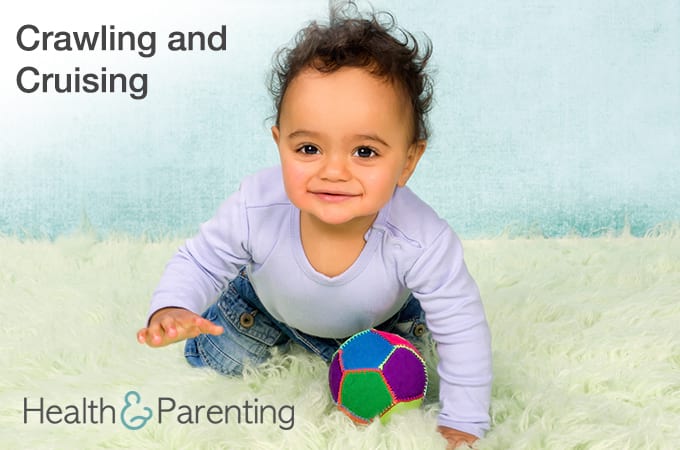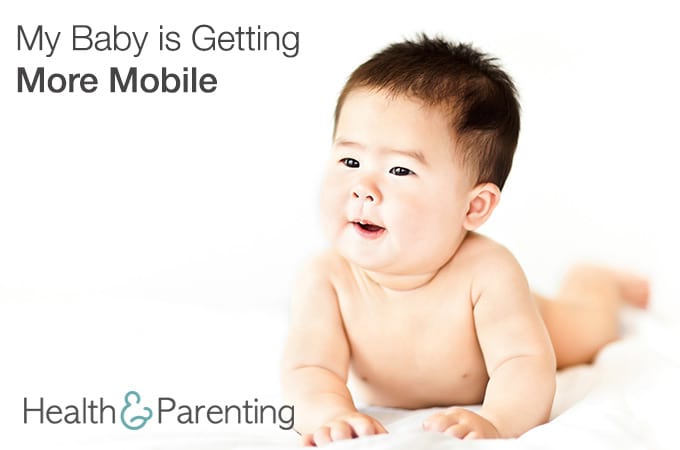Crawling and cruising are significant milestones that often mean walking is not too far behind. Although it can vary, babies often learn to crawl between six and ten months. But babies don’t always follow a set timetable. So don’t worry if your baby reaches ten months and is still content to hangout and has not started to crawl yet. If your little one has not started to crawl by about a year, talk to your pediatrician if you’re concerned.
Learning to Crawl
So how do babies master crawling? Often crawling is a gradual process. Once your baby is sitting well without support, he might learn to get on all fours. You might notice he rocks backs and forth, shifting his weight from his hands to his knees. Although he looks like he might take off at any moment, it might be a few more weeks before he learns to push off with his knees and propel himself forward.
But don’t be surprised if your baby has a different crawling style. Not all babies start crawling on all fours. Some little ones prefer to crawl commando style. Your baby might lie on her tummy and drag herself forward with her arms, army style. Other babies scoot on their bottom instead of crawling on all fours. Creative crawling methods in babies are very common.
Keep in mind, there is no one perfect way to learn to crawl. What’s important is that your baby is making an attempt to get moving. Some babies also skip crawling altogether and go right to standing.
Cruising Along
Before he takes his memorable first step, your baby may start cruising by holding on to furniture and shuffling along. Cruising usually starts shortly after your baby learns to stand. She may start by inching along and sliding her feet while holding on to anything in sight. As she gains confidence and balance, she will pick up her feet and move between pieces of furniture holding on to one while reaching for another.
There is no need to hurry your baby along and try to make him crawl or cruise before he is ready. He will do it in his own time. But there are a few things you can do to encourage his motor skill development. For instance, make sure to give your baby plenty of opportunities for tummy time. Spending time playing on his tummy helps your baby strengthen his trunk, back and arms.
One way to motivate your baby to get mobile is by placing a toy a little out of his reach. Also, if your baby is on all fours and has not yet figured out how to move forward, you can place your hands behind his feet. This might give him something to push off.
Once your baby is crawling and cruising, be sure to take a good look around and make sure everything is baby proofed. For instance, cover electrical outlets, place baby gates near stairs and move plants stands that could tip over when your baby reaches for furniture.
Written by MaryAnn DePietro@writerlady34
This information is not intended to replace the advice of a trained medical doctor. Health & Parenting Ltd disclaims any liability for the decisions you make based on this information, which is provided to you on a general information basis only and not as a substitute for personalized medical advice. All contents copyright © Health & Parenting Ltd 2016. All rights reserved.











